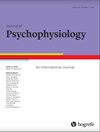麻醉师的心率变异性作为全麻诱导和模拟危重事件期间表现的指标
IF 0.9
4区 心理学
Q4 NEUROSCIENCES
引用次数: 1
摘要
摘要在麻醉环境中,良好的表现描述了对患者没有威胁以及对具有挑战性和可能危及生命的情况的快速反应。在其他方面,表现和认知功能与迷走神经介导的心率变异性(HRV)指标有关。本探索性研究探讨了麻醉师的HRV与他们在全身麻醉诱导和模拟危急事件期间的表现之间的相关性。在本研究中,两组麻醉师分别在手术室(OR, n = 38)和高保真人体患者模拟环境(SIM, n = 23)中进行全麻治疗,分别获得两组麻醉师的心电图(ECG)。频率、时域和非线性HRV指标从5分钟的心电图记录中计算。为了区分高表现(HP)和低表现(LP)个体,诱导所需的时间(在OR设置中)和低血压的长度和深度(在SIM设置中)被用作性能相关性。曼-惠特尼u型检验用于评估组内HRV的差异。在两种情况下(OR和SIM),线性和非线性HRV指标在HP组和LP组之间没有显着差异。此外,麻醉师的工作经验和性别与表现无关。在提供全身麻醉和模拟危急事件期间,高绩效和低绩效个体在HRV指标、性别和工作经验方面没有差异。包括静息条件下HRV的进一步研究是必要的。本文章由计算机程序翻译,如有差异,请以英文原文为准。
Anesthetists’ Heart Rate Variability as an Indicator of Performance During Induction of General Anesthesia and Simulated Critical Incidents
Abstract. In the environment of anesthesia, good performance describes the absence of threat for the patient as well as a quick reaction to challenging and possibly life-threatening circumstances. Elsewhere, performance and cognitive function have been linked to indicators of vagally-mediated heart rate variability (HRV). This exploratory study examines the correlation between anesthetists’ HRV and their performance during uneventful induction of general anesthesia and during a simulated critical incident. For this study electrocardiograms (ECG) were obtained from two different groups of anesthetists providing general anesthesia in uneventful real cases in the operation room (OR, n = 38) and during the management of a hypotension scenario in a high-fidelity human patient simulator environment (SIM, n = 23). Frequency, time domain, and nonlinear HRV metrics were calculated from 5-min ECG recordings. To separate high performing (HP) and low performing (LP) individuals, the time needed for induction (in the OR setting) and the length and depth of hypotension (in the SIM setting) were used as performance correlates. The Mann-Whitney- U-test was used to assess differences in HRV within the groups. In both settings (OR and SIM), linear and nonlinear HRV metrics did not differ significantly between the HP and LP group. Also, the anesthetists’ work experience and sex were not related to performance. While providing general anesthesia and during a simulated critical incident, high and low performing individuals do not differ with respect to HRV metrics, sex, and work experience. Further research including the HRV under resting conditions is necessary.
求助全文
通过发布文献求助,成功后即可免费获取论文全文。
去求助
来源期刊

Journal of Psychophysiology
医学-神经科学
CiteScore
2.60
自引率
7.70%
发文量
25
审稿时长
>12 weeks
期刊介绍:
The Journal of Psychophysiology is an international periodical that presents original research in all fields employing psychophysiological measures on human subjects. Contributions are published from psychology, physiology, clinical psychology, psychiatry, neurosciences, and pharmacology. Communications on new psychophysiological methods are presented as well. Space is also allocated for letters to the editor and book reviews. Occasional special issues are devoted to important current issues in psychophysiology.
 求助内容:
求助内容: 应助结果提醒方式:
应助结果提醒方式:


